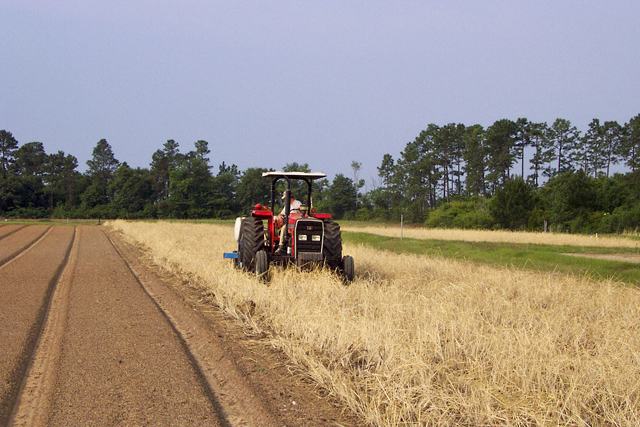No-Till#

In conventional tillage (left), a winter rye cover crop has been mixed with the soil, while in strip tillage (right), the rye residue is left on the soil surface. (Photo by David Bosch, D3495-1)
Definition
Leaving crop residue on the land after harvest, and planting directly in the field withjout turning the soil. Limiting soil disturbance to manage the amount, orientation, and distribution of crop and plant residue on the soil surface year around.
How it works: The idea behind reducing tillage is to limit the amount of time you spend disturbing the soil, breaking up clumps and exposing the soil to the forces of rain, frost, wind, and running water. By harvesting, and then leaving a protective layer of residue on top of the soil, you basically get some of the benefits of having a living plant hold the soil together while also being able to benefit from the harvest. Additionally it turns out that by allowing the soil to develop undisturbed, more carbon remains in the soil promoting a healthy microbial and bacterial community. But for erosion purposes, that residue on the surface keeps water in place, allows more paths for it to infiltrate into the soil, and slows it down as it tries to run off the surface and into your local watershed.
Benefits |
Drawbacks |
|---|---|
Effective way to slow erosion |
Requires new planting patterns and planning |
No new infrastructure required |
Removes a strip of land from production |
Increases water infiltration |
Strip needs maintenance |
Reduced time and energy for field prep |
